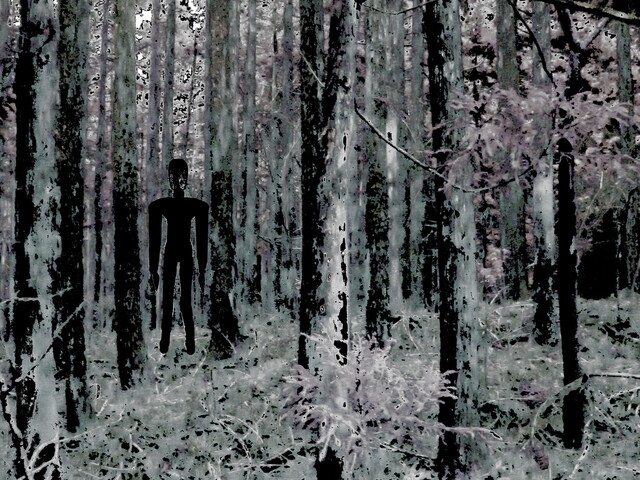Online Class: The Power of Ecology — Shaping a Sustainable Future

no certificate
with CEU Certificate*
-
20Lessons
-
33Exams &
Assignments -
1,377Students
have taken this course -
14Hours
average time -
1.4CEUs
Course Description
Have you ever wondered how life on Earth weaves together into an intricate, beautiful, yet fragile tapestry? Every living organism, every ecosystem, every natural process is part of a profound story-one that shapes not just our environment, but the very future of humanity. If you're ready to move beyond curiosity and become part of the solution to today's most pressing environmental challenges, this course is your gateway.
Our world is changing at an unprecedented pace. Ecosystems are under strain, biodiversity is in peril, and the balance that sustains life is shifting. But within these challenges lies an incredible opportunity-the chance to understand, protect, and even restore the delicate systems that make life on Earth possible. That's what ecology is all about: understanding the connections, deciphering the patterns, and taking action. This course will empower you with the knowledge and skills to make that difference.
Unlike traditional science courses, this isn't about memorizing facts or passively learning theories. It's about immersing yourself in the fascinating story of life on Earth. You'll delve into the dynamic relationships between species, explore how ecosystems function, and uncover the powerful forces that have shaped life over millions of years. From the smallest microbe to the largest mammal, every element has a role-and you'll learn how to uncover those connections and apply that understanding in meaningful ways.
But this course goes further. It's not just about gaining knowledge; it's about transforming how you see the world. You'll explore groundbreaking topics like evolutionary ecology, biogeography, and systems ecology, gaining insights into the processes that govern our planet. You'll discover how cutting-edge tools like Geographic Information Systems (GIS) are revolutionizing our ability to map and protect biodiversity. And you'll walk away with practical skills for managing natural resources, combating biodiversity loss, and driving sustainable solutions.
Whether you're an aspiring environmental scientist, a passionate advocate for sustainability, or simply someone who wants to make a real impact, this course is your springboard. It's designed to inspire, challenge, and equip you to think critically and act decisively in a world that needs knowledgeable, compassionate stewards now more than ever.
This is more than a class-it's a call to action. Are you ready to explore, understand, and safeguard the Earth's most precious systems? The time to act is now. Join us, and be the change our planet so urgently needs.
- Completely Online
- Self-Paced
- 6 Months to Complete
- 24/7 Availability
- Start Anytime
- PC & Mac Compatible
- Android & iOS Friendly
- Accredited CEUs

Course Lessons
Lesson 1. Ecology Unveiled: From Microorganisms to Megafauna
Emerging from roots in ancient philosophy, ecology evolved through contributions from many scientific domains, with significant advancements in understanding ecosystems' dynamics. Pioneers like Linnaeus, Darwin, and Humboldt played crucial roles in shaping ecological thought, influencing both past and modern perspectives.Lesson 2. Life's Relationships: An Ecology Overview
Ecology delves into the relationships among organisms and their environments, emphasizing biodiversity, adaptation, and the role of biotic and abiotic factors. Human-induced challenges, including pollution and deforestation, necessitate global collaboration and innovative solutions for a sustainable future.Lesson 3. Dance of Nature: Ecology and Evolution
Speciation, the genesis of biodiversity, occurs when new species emerge through various processes, such as geographic isolation or ecological niche differentiation. African cichlid fish illustrate speciation's dynamic nature, evolving into diverse forms to exploit distinct ecological roles and opportunities.Lesson 4. Ecological and Evolutionary Synergy
Genetic diversity, highlighted by polymorphism, is crucial for species' adaptability to environmental changes. This diversity ensures resilience as populations evolve through natural selection to meet ecological challenges.Lesson 5. Within and Between: Exploring Relationships in Ecology
Interspecies interactions, such as mutualism and predation, highlight the delicate balance of cooperation and competition that maintains ecosystem health. Obligate and facultative relationships further showcase the diverse ways species coexist and depend on one another.Lesson 6. Biodiversity: Earth's Essential Tapestry
Ecosystems brimming with biodiversity stand as paragons of resilience, providing indispensable resources like food, temperature regulation, and cultural enrichment amid evolving environmental landscapes. However, it is imperative to circumvent jeopardizing these ecosystems through unsustainable human practices and champion global conservation initiatives.Lesson 7. The Dynamics of Extinction and Evolution
The Permian extinction, Earth's largest die-off, erased 96% of marine life and exemplified the planet's drastic evolutionary reshuffles. Presently, human activity threatens to replicate such ecological crises, necessitating urgent conservation efforts.Lesson 8. The Intricate Web of Life on Earth: Understanding Our Biodiverse Planet
Taxonomists play a crucial role in understanding biodiversity, but their numbers are insufficient compared to the vast diversity of organisms, such as beetles which represent a significant proportion of Earth's life forms. The challenge is starkest in biodiversity-rich regions like rainforests, where thousands of species may exist within a single leaf litter, yet few scientists are available to study them.Lesson 9. Wallace's Legacy: The Evolution and Impact of Biogeographical Science
Historical biogeography uses fossils to explore past species distributions, while ecological biogeography analyzes current environmental influences on living organisms. Conservation biogeography applies these insights to protect endangered species and restore ecosystems, such as the unique biodiversity of the Galápagos Islands.Lesson 10. Advanced Technologies in Biogeography: The Role of GIS and Remote Sensing
The integration of GIS and remote sensing allows for effective ecological modeling, such as wildlife corridor identification and climate change impact projection. These technologies help guide conservation efforts by offering precise data on landscape changes and future ecological trends.Lesson 11. Spatial Patterns and Processes in Ecology
Landscape ecology, an interdisciplinary science, blends ecology and geography to study the distribution and dynamics of organisms and ecosystems across landscapes. Emerging from European and North American roots, it leverages biogeographical research and advanced technologies to inform sustainable conservation strategies and urban planning.Lesson 12. The Conservation Implications of Population Dynamics
Population ecology examines populations as interactive communities with density and dispersion implications, impacting survival strategies. By modeling dynamics, it aids in understanding ecological challenges, contributing to informed conservation strategies and biodiversity preservation.Lesson 13. Community Ecology: A Guide to Nature's Relationships
In ecosystems, community interactions like competition, mutualism, and predation form the essence of ecological dynamics, influencing species distribution and abundance. This interaction-driven framework underscores how evolutionary changes shape ecosystems, driving adaptations that ensure community stability and resilience.Lesson 14. Physiological Ecology's Insights for Conservation and Adaptation
Physiological ecology bridges biology and environment, showcasing how organisms adapt to diverse habitats and linking physiological traits to evolutionary backgrounds. This discipline deepens our understanding of organisms' adaptive strategies for survival in changing environments.Lesson 15. Ecosystem Dynamics and Interactions
Ecosystem ecology explores the interaction of organisms and abiotic factors, emphasizing the exchange of energy and materials across ecosystem boundaries. Interdisciplinary by nature, it aids in addressing environmental challenges by providing insights into ecological processes essential for human survival.Lesson 16. The Interconnected Web of Ecology: Bridging Energetics and Ecosystems
Systems ecology offers a holistic approach to understanding ecosystems as complex networks, emphasizing interactions and the influence of human activities. The discipline applies mathematical models and systems analysis techniques originally rooted in engineering to predict ecosystem behaviors in response to disruptions.Lesson 17. Understanding the Vital Role of Plant Ecology in Sustaining Terrestrial Life
Understanding plant ecology involves the study of plants' roles in climate change mitigation and ecosystem interactions, highlighting both the discipline's historical evolution and its modern applications. Plant ecology's insights into plant distribution and interaction fuel approaches to global challenges like habitat loss and climate adaptation.Lesson 18. Nature's Symbiosis: A Comprehensive Guide to Animal Interactions
The vibrant field of animal ecology examines the interconnectedness of life through specialized areas like behavioral and marine ecology, showcasing intricate relationships that foster survival. By studying niches and consumer roles, we delve into the harmonious dance of adaptation within ecosystems and its implications for biodiversity conservation.Lesson 19. Human Ecology: The Intersection of Society and Environment
Ecosystems sustain human life, but human activities such as resource extraction and waste production can disrupt this balance, leading to negative consequences. Human ecology underscores the need for harmony between socio-economic systems and natural ecosystems.Lesson 20. Guardians of Nature: Redefining Humanity's Role in Ecological Conservation
The 1971 UNESCO Man and Biosphere (MAB) program catalyzed global awareness of humanity's interdependence with nature, informing international ecological policies like the Kyoto Protocol. Such agreements, despite political challenges, paved the way for inclusive frameworks like the Paris Agreement to combat climate change holistically.
Learning Outcomes
- Define the concept of ecology as the scientific study of interactions among organisms and their environments, distinguishing it from environmentalism as an advocacy movement.
- Describe the historical evolution of ecological thought, identifying key figures and contributions that have shaped modern ecological studies and their impact on environmental policy.
- Define abiotic and biotic factors in an ecosystem and provide examples of each within different environmental contexts.
- Identify at least three human activities that impact ecological balance and explain their effects on ecosystems.
- Analyze the impact of environmental changes on speciation by illustrating different forms of speciation like allopatric and sympatric through real-world examples.
- Define the concept of natural selection and describe its role in the evolution of species by analyzing examples such as Galápagos finches and peppered moths.
- Identify and explain the life history strategies of organisms by comparing r-strategy and K-strategy examples, such as sea turtles and elephants.
- Define the concept of ecotypes and describe their role in species adaptation to local habitats, using examples to illustrate genetic variation and conservation importance.
- Identify and analyze examples of polymorphism and industrial melanism in various species, evaluating rapid evolutionary changes in response to environmental pressures.
- Describe the different types of symbiotic relationships in ecosystems, including mutualism, commensalism, and parasitism, through real-world examples.
- Identify and analyze adaptive strategies in predator-prey dynamics and their impact on population balance and ecosystem health.
- Define the three levels of biodiversity: ecosystem diversity, species diversity, and genetic diversity, and provide examples of each within a given ecosystem.
- Describe the impact of human activities on biodiversity, including habitat destruction, climate change, pollution, overexploitation, and invasive species, and propose conservation strategies to mitigate these effects.
- Demonstrate mastery of lesson content at levels of 70% or higher.
Additional Course Information

- Document Your Lifelong Learning Achievements
- Earn an Official Certificate Documenting Course Hours and CEUs
- Verify Your Certificate with a Unique Serial Number Online
- View and Share Your Certificate Online or Download/Print as PDF
- Display Your Certificate on Your Resume and Promote Your Achievements Using Social Media

Choose Your Subscription Plan
No Certificate / No CEUs
This course only
| Includes certificate | X |
| Includes CEUs | X |
| Self-paced |

|
| Instructor support |

|
| Time to complete | 6 months |
| No. of courses | 1 course |
Certificate & CEUs
This course only
| Includes certificate |

|
| Includes CEUs |

|
| Self-paced |

|
| Instructor support |

|
| Time to complete | 6 months |
| No. of courses | 1 course |
Certificates & CEUs
Includes all 600+ courses
| Includes certificate |

|
| Includes CEUs |

|
| Self-paced |

|
| Instructor support |

|
| Time to complete | 12 Months |
| No. of courses | 600+ |
Certificates & CEUs
Includes all 600+ courses
| Includes certificate |

|
| Includes CEUs |

|
| Self-paced |

|
| Instructor support |

|
| Time to complete | 24 Months |
| No. of courses | 600+ |
Student Testimonials
- "Again, wonderful course, very interesting, covered a lot of subject matter, and I learned a lot. Thank you!" -- Kathleen S.
- "The instructor obviously was an expert, and she truly seemed to enjoy her work as an instructor." -- Judith J.
- "The reviews of each part of ecology really helped me categorize and will allow me to respond quicker to my students' questions." -- James S.
- "I enjoyed the course and instructor. Most everything was helpful." -- Joel H.
Related Courses
-
 4 hours
0.4 CEUs
Building a Bully-Free Future
+ More Info
4 hours
0.4 CEUs
Building a Bully-Free Future
+ More Info
-
 6 hours
0.6 CEUs
Sustainable Development for Business
+ More Info
6 hours
0.6 CEUs
Sustainable Development for Business
+ More Info
-
 6 hours
0.6 CEUs
Retirement Tips
+ More Info
6 hours
0.6 CEUs
Retirement Tips
+ More Info
-
 74 hours
7.4 CEUs
Medical Billing and Coding Course Bundle
+ More Info
74 hours
7.4 CEUs
Medical Billing and Coding Course Bundle
+ More Info
-
 6 hours
0.6 CEUs
Cryptozoology 101
+ More Info
6 hours
0.6 CEUs
Cryptozoology 101
+ More Info
-
 6 hours
0.6 CEUs
Managing Difficult Employees
+ More Info
6 hours
0.6 CEUs
Managing Difficult Employees
+ More Info
-
 22 hours
2.2 CEUs
Medical Abbreviations
+ More Info
22 hours
2.2 CEUs
Medical Abbreviations
+ More Info
-
 10 hours
1.0 CEUs
Global Anti-Corruption and Bribery
+ More Info
10 hours
1.0 CEUs
Global Anti-Corruption and Bribery
+ More Info
-
 9 hours
0.9 CEUs
English Grammar Level 2
+ More Info
9 hours
0.9 CEUs
English Grammar Level 2
+ More Info
-
 14 hours
1.4 CEUs
QuickBooks Online
+ More Info
14 hours
1.4 CEUs
QuickBooks Online
+ More Info
-
 5 hours
0.5 CEUs
Personal Communication Skills Level 1
+ More Info
5 hours
0.5 CEUs
Personal Communication Skills Level 1
+ More Info
-
 26 hours
2.6 CEUs
Human Resources Productivity Course Bundle
+ More Info
26 hours
2.6 CEUs
Human Resources Productivity Course Bundle
+ More Info
-
 6 hours
0.6 CEUs
Fair Standards Labor Act and the Workforce
+ More Info
6 hours
0.6 CEUs
Fair Standards Labor Act and the Workforce
+ More Info
-
 11 hours
1.1 CEUs
Writing Effective Emails in the Workplace
+ More Info
11 hours
1.1 CEUs
Writing Effective Emails in the Workplace
+ More Info
-
 5 hours
0.5 CEUs
Children's Birthday Parties 101
+ More Info
5 hours
0.5 CEUs
Children's Birthday Parties 101
+ More Info
-
 7 hours
0.7 CEUs
Management Consultant 101
+ More Info
7 hours
0.7 CEUs
Management Consultant 101
+ More Info
-
 9 hours
0.9 CEUs
Microsoft Project Level 1
+ More Info
9 hours
0.9 CEUs
Microsoft Project Level 1
+ More Info





